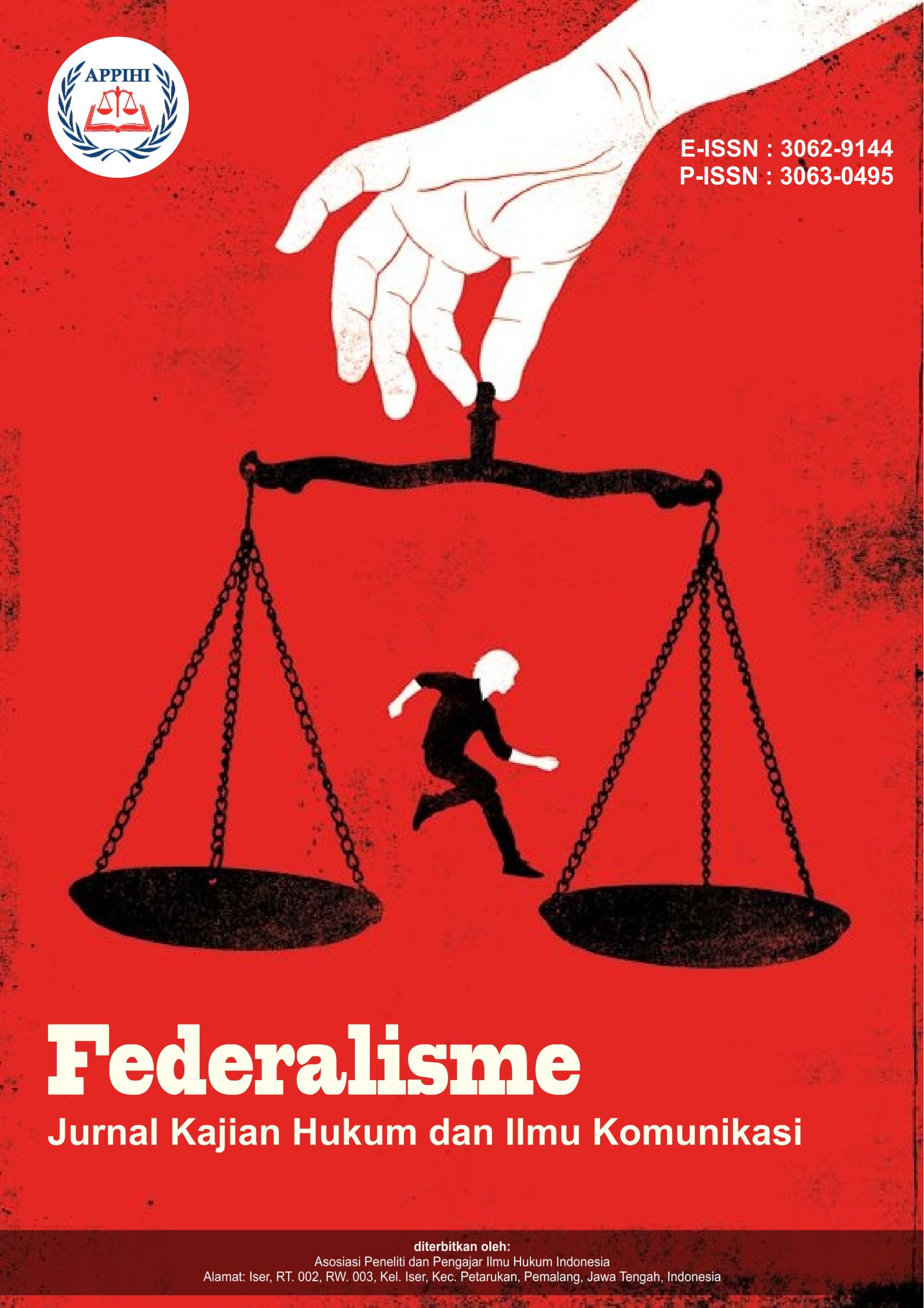Faktor-Faktor Yang Menghambat Perlindungan Konsumen terhadap Pengguna Barang Thrift Fasion dipasar Andalas Kota Gorontalo
DOI:
https://doi.org/10.62383/federalisme.v1i3.50Keywords:
Legal Protection, Consumers, ThriftAbstract
This research aims to find out about the phenomenon of legal protection for consumers using thrift fashion goods in the Andalas market, Gorontalo City and the factors that hinder consumer protection for users of thrift fashion goods in the Andalas market, Gorontalo City. This research uses empirical legal research methods which are carried out by collecting data through observation and interviews. The results of this research indicate that Consumer Protection is regulated in Law no. 8 of 1999 which is a replacement for Law no. 3 of 1989 concerning Telecommunications. The consumer protection law itself regulates the rights and obligations of consumers, including producers, who act to meet consumer needs and ensure the realization of legal protection for the benefit of others. In essence, consumer protection is the consumer's own right, including the activities and movements of the sales industry which are currently being widely discussed and highlighted, especially the buying and selling of imported second-hand clothing, known as thrifting, namely the activity of shopping for used goods such as clothes and other types, whose prices are very high. cheaper, as well as factors that hinder the provision of this protection and make it not work as it should. In the city of Gorontalo itself, there are problems in providing consumer protection for the sale of imported second-hand clothing, namely; strong desire on the part of sellers and buyers, law enforcement is limited to socialization and appeals without confiscation and sanctions, and lack of public awareness.
Downloads
References
ADAM, D. A., JUNUS, N., MANDJO, J. T., KADIR, M. K. K., & MAMU, K. Z. (2024). PROBLEMATIKA PERLINDUNGAN TERHADAP KONSUMEN PAKAIAN BEKAS. GANEC SWARA, 18(1), 155-162.
Ahmadi Miru dan Sutarman Yodo, 2004, Hukum Perlindungan Konsumen, Jakarta: PT. Gaja Grafindo Persada, hlm.41
Beby suryani fitri dkk, asas ultimum/remedium the last resort principle terhadap pelaku usaha dalam hukum perlindungan konsumen, vol. 4 doktrina: jurnal of law, no 1, april, 2021, hal. 69
celina tri siwi kristiyanti, “HUKUM PERLINDUNGAN KONSUMEN”, Sinar grafika,jakarta ,november 2008,13
Damiati dkk, perilaku konsumen, cet. Pertama depok, 2017, hal. 4
Ni desak made santi Diwyyarthi dkk, perilaku konsumen,pt.global eksekutif teknologi,padang, sumatera barat,cet. Pertama juni 2022, hal.37
Nirwan Junus, dkk, Perlindungan Hukum bagi Konsumen dalam Transaksi handphone Rekondisi. Jurnal kajian Ilmu Hukum dan Politik. Vol1 No. 3 (2023).
Rosmawati, pokok-pokok perlindungan konsumen, prenadamedia group, depok 2018. Hal.6
Putri asyifa octavia apandy dkk, pentingnya hukum perlindungan konsumen dalam jual beli, vol. 3, jurnal manajemen dan bisnis, no 1,juli 2021 hal.13
Sri Nanang Meiske kamba,dkk, Implementasi Hukum PT. Garuda Indonesia Terhadap Kerugian Kehilangan Atau Kerusakan Barang Bagasi Konsumen Di bandara Djalaludin. Jurnal Ilmu Hukum dan Administrasi Negara. Vol.1, No. 4 2023.
Priyanto, J., Lahay, I. H., & Junus, S. (2019, December). PERANCANGAN ULANG TATA LETAK PASAR TRADISIONAL DENGAN METODE MARKET BASKET ANALYSIS (Studi Kasus Pasar Sabtu Andalas, Kota Gorontalo. In SemanTECH (Seminar Nasional Teknologi, Sains dan Humaniora) (Vol. 1, No. 1, pp. 261-268).
Waldi Nopriansyah, hukum bisnis di indonesia,pernadamedia group, jakarta 2019,hal. 206
wahyu simon Tampubolon, upaya perlindungan bagi konsmen ditinjau dari undang-undang perlindungan konsumen,vol,04, jurnal ilmiah 01 maret 2016.
Weny Almoravid Dungga, dkk. Perlindungan Hukum Terhadap Konsumen Terkait Penjualan Makanan dan Minuman Dalam Kemasan Kadaluarsa. Jurnal Ilmu social,Humaniora dan Seni. Vol. 1 No. 2 (2023).
Wijaya, M. W. A., & Andriasari, D. (2022, July). Bisnis Pakaian Impor Bekas (Thrifting) sebagai Tindak Pidana Ditinjau dari Undang-Undang Nomor 7 Tahun 2014 tentang Perdagangan. In Bandung Conference Series: Law Studies (Vol. 2, No. 2, pp. 1117-1123).






